
Cointelegraph analyzed the main crypto forecasts for 2025 from leading firms and presented the key takeaways in its latest video.
29 Jan, 2025 | Admin | No Comments
Crypto industry report 2025: Key trends, insights and growth opportunities


Cointelegraph Research delves into 2024’s defining trends, analyzing Bitcoin’s historic rise, DeFi’s recovery, altcoin dynamics and regulatory shifts.

Want to buy Bitcoin in Singapore? This guide covers trusted methods, key steps and safety tips to start your crypto journey confidently.
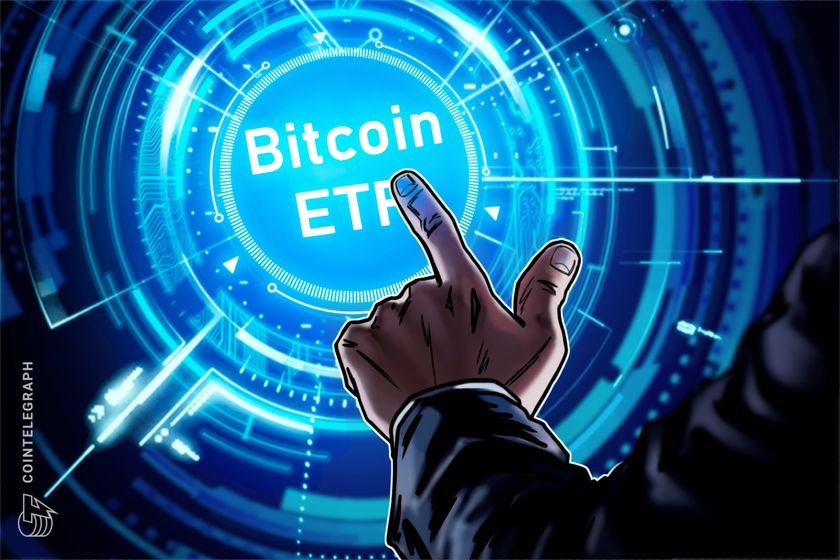
Discover the easiest way to invest in Bitcoin ETFs. Follow our guide to open an account, fund it and choose the best ETF for your goals.
25 Jan, 2025 | Admin | No Comments
Crypto advocates focus on Congress as GOP takes control of US gov’t


The Republican Party now has control over the United States Senate, the Executive Branch, and the House of Representatives.
24 Jan, 2025 | Admin | No Comments
America’s Bitcoin Era Begins as Trump Creates Crypto Working Group
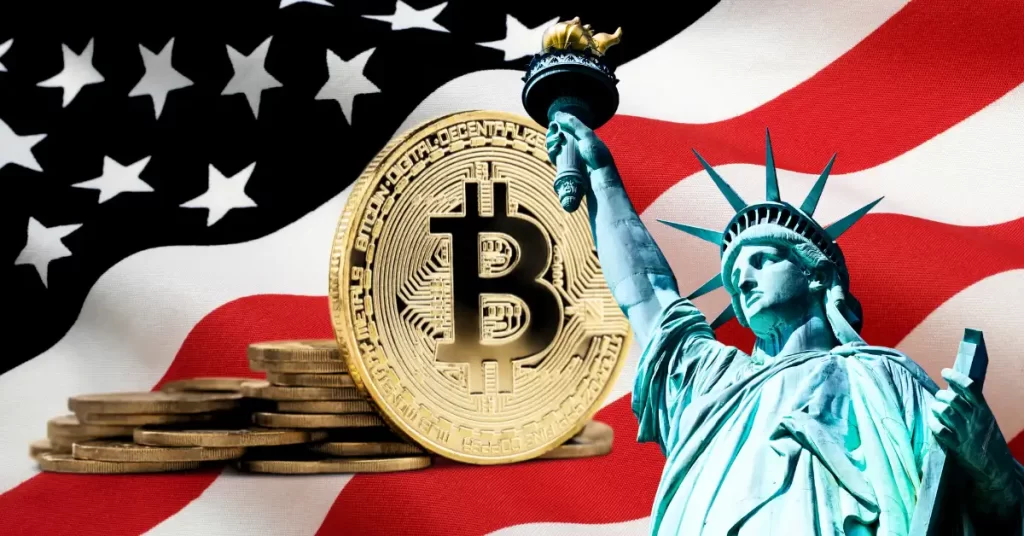

The post America’s Bitcoin Era Begins as Trump Creates Crypto Working Group appeared first on Coinpedia Fintech News
On January 23, 2025, President Donald Trump ordered the creation of a cryptocurrency working group to propose digital asset regulations and explore a national cryptocurrency stockpile. The move aims to overhaul U.S. crypto policy, ensuring innovation, security, and global leadership in the rapidly evolving digital asset space.
Could this initiative change how countries view reserve assets and redefine the global financial system? Bitcoin’s potential to alter power dynamics in the financial world is becoming more apparent.
What Is the Bitcoin Reserve Bill?
The Strategic Bitcoin Reserve Bill is a legislative proposal aimed at establishing a national reserve of Bitcoin for the United States. The primary objectives of the bill include:
- Acquisition of Bitcoin: The federal government would systematically purchase Bitcoin to build a substantial reserve.
- Strategic Asset Development: Positioning Bitcoin as a strategic asset to enhance national financial security and leverage its potential for future economic benefits.
Key Provisions of the Bitcoin Reserve Bill
The Bitcoin Reserve Bill lays out a comprehensive strategy to incorporate Bitcoin into the U.S. financial system. Here are the major components of the law:
Establishing a National Bitcoin Reserve
The U.S. government will aim to acquire 1 million bitcoins over a five-year period. This would account for 5% of Bitcoin’s total supply, making the U.S. one of the largest holders of the cryptocurrency.
Annual Bitcoin Purchases
To reach the target, the federal government will purchase 200,000 bitcoins annually for 5 years. The funding for these purchases will come from:
- Profits generated from existing Federal Reserve deposits.
- Sales of a portion of the national gold reserves.
Creation of the Digital Asset Oversight Committee
A Digital Asset Oversight Committee will be established to oversee the acquisition, storage, and management of the Bitcoin reserve. The committee will:
- Ensure secure storage solutions for Bitcoin.
- Develop a comprehensive risk management strategy to address Bitcoin’s price volatility.
- Provide annual reports to Congress on the status and performance of the reserve.
Regulatory Clarity
The Bitcoin Reserve bill emphasizes creating a clear and consistent regulatory framework for Bitcoin and other digital assets. This includes:
- Recognizing Bitcoin as a legitimate reserve asset.
- Implementing anti-fraud and anti-money laundering measures.
- Encouraging private-sector innovation in the cryptocurrency space.
Bitcoin Reserve Stats: A Snapshot
As of January 2025, here are some key statistics to help assess the potential of the U.S. Bitcoin reserve:
- Bitcoin Market Capitalization: Approximately $2 trillion. It signifies a considerable and liquid market compared to other growing classes.
- Bitcoin Circulating Supply: About 19.8 million Bitcoins in total of 21 million; This scarce supply is one typical characteristic that is why Bitcoin is attractive as an inflation hedge.
- US GDP: The approximate US GDP for the year 2025 is around $25 trillion. This helps put the potential scale of a Bitcoin reserve into perspective in terms of the US economy.
- US National Debt: The US national debt now stands at more than $30 trillion. In the long run, this can easily be paid off by mixing the reserves with Bitcoin; however, this approach is debatable.
These are dynamic numbers. The economy changes regularly and its benchmarks change over time.
El Salvador’s Bitcoin Journey
While the US Bitcoin Reserve Bill is a landmark, the first country was El Salvador which, in September 2021, became the first country that adopted Bitcoin to be used legally. This new move has, in turn, reshaped its entire financial world. A blueprint perhaps, and a cautionary case study for many other nations wanting to do this.
Why Do El Salvador Need Bitcoin?
El Salvador had several economic issues that compelled it to turn towards Bitcoin adoption:
Remittances Dependence
Remittances make up 23% of El Salvador’s GDP, with millions of citizens receiving money from abroad. Traditional remittance services like Western Union charge high fees, reducing the amount families receive. Bitcoin offers a cheaper and faster way to transfer money.
Limited Financial Inclusion
Over 70% of Salvadorans lacked access to banking services. This meant that a majority of the population was not engaged with any form of financial system. Bitcoin and digital wallets like Chivo allow unbanked citizens to send, receive, and store money digitally. Therefore, financial services became more accessible.
El Salvador uses the U.S. dollar as its official currency, which limits the control of the monetary policy of the country. By using Bitcoin, the government was seeking to diversify its financial system and gain more independence.
El Salvador’s Steps to Implement Bitcoin
To adopt Bitcoin, El Salvador took several significant actions:
- Bitcoin Law: Passed in 2021, this law made Bitcoin legal tender alongside the U.S. dollar. Businesses were required to accept Bitcoin, but citizens could choose whether to use it.
- Chivo Wallet: The government introduced a digital wallet called Chivo, providing each user $30 in Bitcoin to encourage adoption.
- Volcano Bonds: A $1 billion Bitcoin-backed bond was launched to finance infrastructure projects, including the proposed Bitcoin City powered by geothermal energy.
- Bitcoin Purchases: The government actively bought Bitcoin for reserves, accumulating over 6,000 bitcoins by 2025.
Impact of Bitcoin Adoption in El Salvador
El Salvador’s Bitcoin adoption has had both positive and negative effects:
Benefits
- Sending money home became cheaper, saving families millions of dollars. For example, transferring $100 through Bitcoin costs less than $1, while the traditional way costs $10–15.
- Bitcoin adoption attracted Bitcoin enthusiasts and investors, increasing tourism by 30% in 2022.
- Bitcoin investments reduced dependence on the U.S. dollar and diversified the economy.
- Bitcoin adoption created tech jobs and attracted foreign businesses.
Challenges
- Despite efforts by the government, 92% of citizens rarely use Bitcoin because of skepticism and lack of understanding.
- The value of Bitcoin fluctuates, causing losses in the country’s reserves.
- Most citizens did not have the internet, making it hard to use digital wallets.
- The IMF criticized El Salvador’s Bitcoin strategy, which exposed the country to financial risks.
Comparing the U.S. and El Salvador’s Bitcoin Strategies
| Aspect | United States | El Salvador |
| Bitcoin Use Case | Strategic reserve asset | Legal tender |
| Bitcoin Holdings | 200,000 BTC ($21 billion value) | 6,044 BTC ($610 million value) |
| Annual Purchases | 200,000 BTC | No specific target |
| GDP Impact | Target reserve: 0.57% of GDP | Bitcoin holdings: 1.6% of GDP |
| Key Challenges | Market volatility, regulation | Public mistrust, infrastructure issues |
What Can the U.S. Learn from El Salvador?
El Salvador’s experience provides key lessons for the U.S.:
- Education: Many Salvadorans remain unfamiliar with Bitcoin. The U.S. must educate its citizens to ensure widespread understanding and acceptance.
- Price Volatility: Bitcoin’s price swings pose a risk to national reserves. A solid risk management strategy is crucial.
- Infrastructure: Limited internet access was a challenge in El Salvador. The U.S. must ensure it has the infrastructure to support digital asset adoption.
- Global Cooperation: The U.S. has more influence than El Salvador, but it must collaborate with international organizations to build a supportive environment for Bitcoin.
Impact on the Crypto Market and the U.S. Dollar
Crypto Market Impact
The U.S. Bitcoin Reserve is likely to have significant effects on the crypto market:
- Increased demand for Bitcoin could drive its price up, as governments buy and hold Bitcoin in their treasuries.
- Official government adoption would further legitimize Bitcoin, encouraging wider use by individuals and businesses.
- A clear regulatory framework would provide more clarity and foster further innovation in the crypto space.
Impact on the US Dollar
The concept of a potential Bitcoin reserve has implications for the US dollar, appears to be quite complex and up for debate. There are different viewpoints:
- Strengthening the Dollar: The one argument is that acceptance of Bitcoin and becoming a leader in the digital asset space would further strengthen the prestige and influence of the dollar. It would attract more investment and reinforce the dollar as a global reserve currency.
- Weakening the Dollar: Others believe that the increased use of Bitcoin as a parallel currency will weaken the dollar. If people and businesses increasingly use Bitcoin for transactions and store value in it, demand for dollars could decrease.
The actual impact will depend on various factors, including the scale of the Bitcoin reserve, the regulatory environment, and how widely Bitcoin is adopted by individuals and businesses.
What’s Next for the U.S. and Bitcoin?
The US Bitcoin Reserve Bill sets the stage for a transformative era in the U.S. financial system. By incorporating Bitcoin into its national reserves, the U.S. could:
- Strengthen its position as a global leader in cryptocurrency innovation.
- Provide stability and legitimacy to the volatile cryptocurrency market.
- Encourage further adoption of digital assets across sectors.
.article-inside-link {
margin-left: 0 !important;
border: 1px solid #0052CC4D;
border-left: 0;
border-right: 0;
padding: 10px 0;
text-align: left;
}
.entry ul.article-inside-link li {
font-size: 14px;
line-height: 21px;
font-weight: 600;
list-style-type: none;
margin-bottom: 0;
display: inline-block;
}
.entry ul.article-inside-link li:last-child {
display: none;
}
- Also Read :
- Donald Trump’s Crypto Portfolio, Policy Changes, & Top Blockchain Projects: Full Report
- ,
Conclusion
The Strategic Bitcoin Reserve Bill is a significant step in the discussion about digital assets and their future role in the global financial system. However, it comes with challenges, including price volatility, regulatory uncertainty, and security concerns. The impact on the U.S. dollar remains a complex issue, with opinions divided.
.article_register_shortcode {
padding: 18px 24px;
border-radius: 8px;
display: flex;
align-items: center;
margin: 6px 0 22px;
border: 1px solid #0052CC4D;
background: linear-gradient(90deg, rgba(255, 255, 255, 0.1) 0%, rgba(0, 82, 204, 0.1) 100%);
}
.article_register_shortcode .media-body h5 {
color: #000000;
font-weight: 600;
font-size: 20px;
line-height: 22px;
text-align:left;
}
.article_register_shortcode .media-body h5 span {
color: #0052CC;
}
.article_register_shortcode .media-body p {
font-weight: 400;
font-size: 14px;
line-height: 22px;
color: #171717B2;
margin-top: 4px;
text-align:left;
}
.article_register_shortcode .media-body{
padding-right: 14px;
}
.article_register_shortcode .media-button a {
float: right;
}
.article_register_shortcode .primary-button img{
vertical-align: middle;
width: 20px;
margin: 0;
display: inline-block;
}
@media (min-width: 581px) and (max-width: 991px) {
.article_register_shortcode .media-body p {
margin-bottom: 0;
}
}
@media (max-width: 580px) {
.article_register_shortcode {
display: block;
padding: 20px;
}
.article_register_shortcode img {
max-width: 50px;
}
.article_register_shortcode .media-body h5 {
font-size: 16px;
}
.article_register_shortcode .media-body {
margin-left: 0px;
}
.article_register_shortcode .media-body p {
font-size: 13px;
line-height: 20px;
margin-top: 6px;
margin-bottom: 14px;
}
.article_register_shortcode .media-button a {
float: unset;
}
.article_register_shortcode .secondary-button {
margin-bottom: 0;
}
}
Never Miss a Beat in the Crypto World!
Stay ahead with breaking news, expert analysis, and real-time updates on the latest trends in Bitcoin, altcoins, DeFi, NFTs, and more.
FAQs
The Strategic Bitcoin Reserve Bill is a U.S. law to establish a national Bitcoin reserve, acquiring 1M BTC over five years to boost financial security.
The U.S. plans to hold 1M BTC by 2030. Currently, it has acquired 200,000 BTC as part of its five-year Strategic Bitcoin Reserve strategy.
As of 2025, there are over 30,000 Bitcoin ATMs in the United States, making it the country with the highest concentration of Bitcoin machines.

Bitcoin investors must navigate a complex tax landscape, including understanding taxable vs. non-taxable transactions, key regulations by jurisdiction and ways to stay compliant.
23 Jan, 2025 | Admin | No Comments
Donald Trump’s Crypto Portfolio, Policy Changes, & Top Blockchain Projects: Full Report
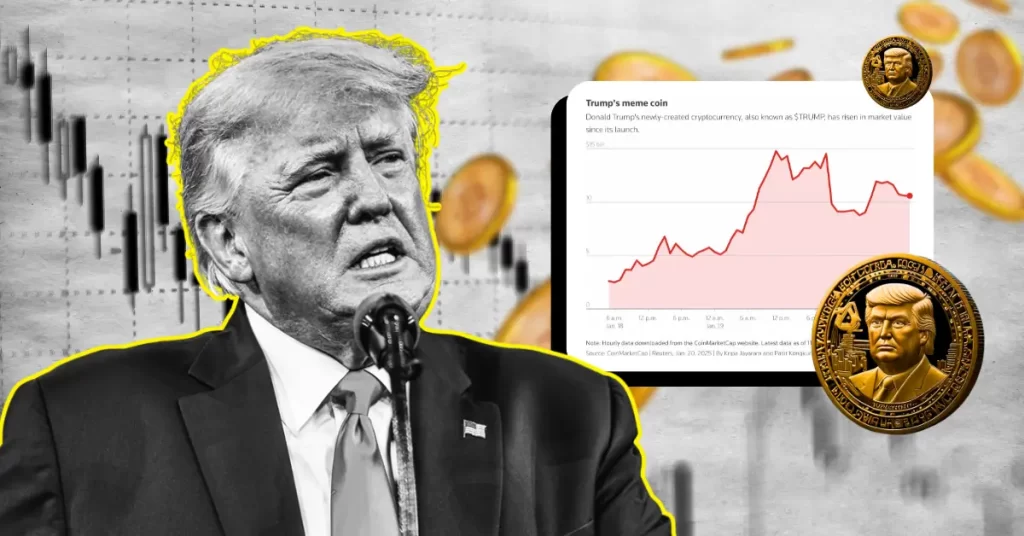

The post Donald Trump’s Crypto Portfolio, Policy Changes, & Top Blockchain Projects: Full Report appeared first on Coinpedia Fintech News
Donald Trump’s changing stance on cryptocurrencies is a fascinating story of transformation. From being a vocal critic to actively supporting blockchain innovation, his shift has had a significant impact on the digital asset world. His policies, personal investments, and crypto-focused initiatives have positioned him as an influential figure in the crypto space.
How did it all happen? Time for a deep dive. Join in.
Evolution of Trump’s Crypto Stance
Trump’s journey with cryptocurrencies has evolved dramatically, starting from skepticism and shifting toward strong advocacy.
2019: Active Critic of Cryptocurrencies
In July 2019 Donald Trump

Donald Trump
Donald Trump is an American former president politician, businessman, and media personality, who served as the 45th president of the U.S. between 2017 to 2021. Trump earned a Bachelor of science in economics from the University of Pennsylvania in 1968. Trump won the 2016 presidential election as the Republican Party nominee against Democratic Party nominee Hillary Clinton while losing the popular vote. As president, Trump ordered a travel ban on citizens from several Muslim-majority countries, diverted military funding toward building a wall on the U.S.–Mexico border, and implemented a family separation policy. Trump has remained a prominent figure in the Republican Party and is considered a likely candidate for the 2024 presidential election
President
made several strong criticisms against Bitcoin and other cryptocurrencies. He tweeted:
“I am not a fan of Bitcoin and other Cryptocurrencies, which are not money, and whose value is highly volatile and based on thin air. Unregulated crypto assets can facilitate unlawful behavior, including drug trade and other illegal activities.”
During that time, Trump’s administration also proposed tighter regulations on digital currencies, claiming that illicit activities were being conducted.
2021-2023: Gradual Shift Toward Acceptance
As time passed, Trump softened his stance. After leaving the White House, he spoke positively about blockchain in interviews, suggesting it could help modernize the financial system. While still cautious about Bitcoin’s volatility, he became more open to blockchain’s potential for innovation.
2024: Campaign Messages: Pro-Crypto
In his 2024 presidential election, Trump made a direct move to be pro-crypto. In his agenda, he promised to enhance blockchain innovation, relax the regulations, and be the first in the digital economy in the United States.
2025: “The First Crypto President”
By 2025, Trump had fully embraced cryptocurrency and was known as the “First Crypto President.” His policies and personal investments reflected a push for the widespread adoption of blockchain in the U.S. economy.
Donald Trump’s Crypto Portfolio
According to the data from crypto intelligence firm Arkham, as of January 2025, Trump’s cryptocurrency portfolio has experienced multiplying growth. His holdings reveal a strategic approach to digital asset investments.
Portfolio Overview
- Total Value: $15.8 million (up from $1.3 million in January 2024).
Key Assets:
- TROG Tokens: 210 billion tokens valued at $9.5 million.
- Trump Coins: 579,000 tokens valued at $1.66 million.
- Ethereum (ETH): Approximately $1.60 million in value.
Market Performance
In January 2025, Trump’s portfolio increased by $2.7 million. This was due to an increase in investor confidence after the announcements of crypto-friendly policies from his administration.
Donald Trump’s Crypto Project: WLFI
One of Trump’s most ambitious crypto projects is World Liberty Finance, which aims to create a global financial ecosystem powered by blockchain.
Project Overview
- Token Name: WLFI (World Liberty Finance Token).
- Total Token Supply: 100 billion WLFI tokens.
- First Raise: $300 million, 20% of tokens sold.
- Current Token Sale: Sold an additional 5 billion tokens at $0.05.
- Projected Additional Raise: $250 million.
Key Investors
- Justin Sun: TRON founder who has invested $75 million in WLFI:
- Initial investment: $30 million.
- Additional investment: $45 million.
- Transaction Volume: The platform has processed more than $889 million through its Safe Protocol institutional account, which shows a lot of activity within its ecosystem.
The platform has processed over $889 million through its Safe Protocol institutional account, indicating substantial activity within its ecosystem.
World Liberty Finance aims to simplify global transactions, lending, and investments by decentralizing financial systems. This project is designed to assist underbanked communities and make financial growth more accessible.
Trump Cryptocurrency Tokens: $TRUMP and $MELANIA Memecoins
In January 2025, President Donald Trump and First Lady Melania Trump launched two memecoins: $TRUMP and $MELANIA. It was a great entry into the cryptocurrency market.
$TRUMP Memecoin
- Blockchain: It was launched on the Solana blockchain. It is a high-speed transactional blockchain and scalable.
- Market Capitalization: The market cap crossed over $9 billion in two days after the launch.
- Launch Price: Sold at $0.18 per token.
- Peak Price: The two days topped it at $75.35 since the market had a lot of interest in it.
- Ownership: The tokens are held by Trump-affiliated entities, especially CIC Digital LLC and Fight Fight Fight LLC, about 80%.
$MELANIA Memecoin
After the release of $TRUMP, first lady Melania Trump launched the $MELANIA memecoin.
- Market Cap: Within days, it reached a market cap of about $810 million.
- Rapid Adoption: Its prices skyrocketed in no time after its creation.
Trump Administration’s New Cryptocurrency Regulations
President Donald Trump’s administration has introduced several initiatives to position the United States as a leader in blockchain and cryptocurrency innovation:
Establishment of the U.S. DOGE Service
In early 2025, President Trump signed an executive order renaming the U.S. Digital Service to the U.S. DOGE Service, integrating it within the Executive Office of the President. This move aims to reduce federal spending and bureaucracy, with elon musk

elon musk
Elon Musk Is the Co-founder of Tesla, an investor and entrepreneur. He was born on the 28th of June,1971, and is based in Pretoria, South Africa. He graduated from the University of Pennsylvania, earning a bachelor's degree in Arts and physics, and the Wharton School, earning a bachelor's degree in science, and economics. In 2003 Musk founded Tesla, an electric vehicle and clean energy company. Elon Musk is a crypto enthusiast, he has a complex relationship with cryptocurrency. He purchased $1.5 billion in the cryptocurrency. Musk was honored with Axel Springer Award, an award given to innovative people, who build new markets, change markets, and contribute to society. He was also listed on Forbes Billionaire with a total net worth of $2 Billion.
NAsales@teslamotors.com
EntrepreneurInvestorChief Executive Officer
appointed to lead the department.
Presidential Council on Cryptocurrencies
According to Forbes report, President Trump plans to sign executive orders to elevate cryptocurrency to a national policy priority and form a Presidential Council on Cryptocurrencies. This council is expected to provide guidance on integrating digital assets into the U.S. financial system.
Support for ‘Made in USA’ Crypto Projects
The administration is anticipated to promote domestic blockchain projects, encouraging innovation within the United States. This initiative aligns with the broader goal of establishing the U.S. as the “crypto capital of the planet.”
These actions reflect a strategic effort to integrate cryptocurrencies into the national economy, fostering innovation while addressing regulatory challenges.
Problems and Ethical Issues in Trump’s Crypto Policies
While Trump’s pro-crypto policies have generated excitement, they’ve also raised ethical concerns.
Critics have pointed out potential conflicts of interest, particularly with the launch of the $TRUMP and $MELANIA memecoins. They argue that Trump’s policies may unfairly benefit him personally. Additionally, the volatility of $TRUMP’s price raised concerns about market speculation and manipulation.
.article-inside-link {
margin-left: 0 !important;
border: 1px solid #0052CC4D;
border-left: 0;
border-right: 0;
padding: 10px 0;
text-align: left;
}
.entry ul.article-inside-link li {
font-size: 14px;
line-height: 21px;
font-weight: 600;
list-style-type: none;
margin-bottom: 0;
display: inline-block;
}
.entry ul.article-inside-link li:last-child {
display: none;
}
Outlook
Donald Trump’s journey into the world of cryptocurrency has been nothing short of remarkable, transforming from a skeptic to a vocal supporter. Through his investments and ambitious projects like World Liberty Finance, he’s helping to shape the future of U.S. crypto policy.
While his approach has sparked both excitement and ethical concerns, it highlights the rising influence of blockchain technology in global finance. If Trump continues backing cryptocurrency, his legacy could play a major role in making the U.S. a leader in blockchain innovation for years to come. A story for the books!
.article_register_shortcode {
padding: 18px 24px;
border-radius: 8px;
display: flex;
align-items: center;
margin: 6px 0 22px;
border: 1px solid #0052CC4D;
background: linear-gradient(90deg, rgba(255, 255, 255, 0.1) 0%, rgba(0, 82, 204, 0.1) 100%);
}
.article_register_shortcode .media-body h5 {
color: #000000;
font-weight: 600;
font-size: 20px;
line-height: 22px;
text-align:left;
}
.article_register_shortcode .media-body h5 span {
color: #0052CC;
}
.article_register_shortcode .media-body p {
font-weight: 400;
font-size: 14px;
line-height: 22px;
color: #171717B2;
margin-top: 4px;
text-align:left;
}
.article_register_shortcode .media-body{
padding-right: 14px;
}
.article_register_shortcode .media-button a {
float: right;
}
.article_register_shortcode .primary-button img{
vertical-align: middle;
width: 20px;
margin: 0;
display: inline-block;
}
@media (min-width: 581px) and (max-width: 991px) {
.article_register_shortcode .media-body p {
margin-bottom: 0;
}
}
@media (max-width: 580px) {
.article_register_shortcode {
display: block;
padding: 20px;
}
.article_register_shortcode img {
max-width: 50px;
}
.article_register_shortcode .media-body h5 {
font-size: 16px;
}
.article_register_shortcode .media-body {
margin-left: 0px;
}
.article_register_shortcode .media-body p {
font-size: 13px;
line-height: 20px;
margin-top: 6px;
margin-bottom: 14px;
}
.article_register_shortcode .media-button a {
float: unset;
}
.article_register_shortcode .secondary-button {
margin-bottom: 0;
}
}
Never Miss a Beat in the Crypto World!
Stay ahead with breaking news, expert analysis, and real-time updates on the latest trends in Bitcoin, altcoins, DeFi, NFTs, and more.
FAQs
WLFI is Trump’s blockchain project aiming to simplify global financial systems and promote decentralized finance innovation.
Trump holds TROG tokens ($9.5M), Trump Coins ($1.66M), and Ethereum ($1.6M), totaling $15.8M in value.
Trump introduced a Presidential Council on Cryptocurrencies and promoted domestic blockchain projects to position the U.S. as a crypto leader.
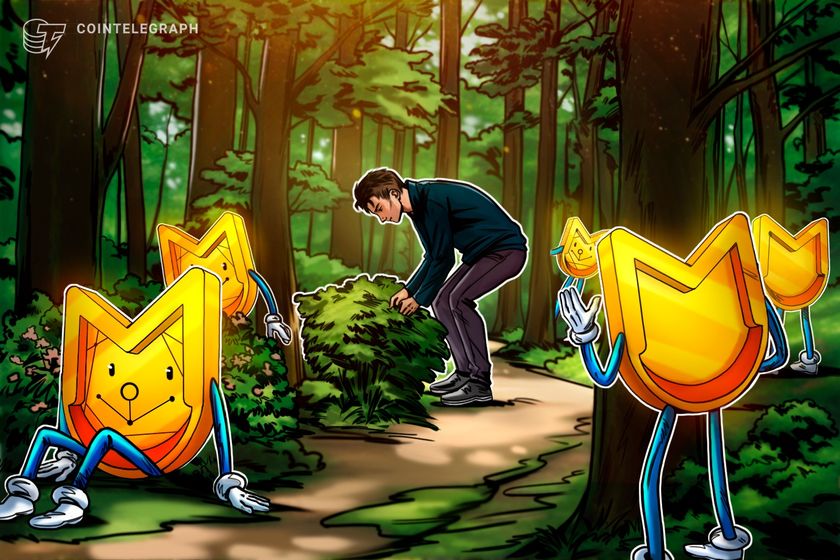
Discover practical strategies to spot new memecoins before they go viral, including tracking launch platforms, analyzing social media trends and leveraging blockchain tools for early opportunities.
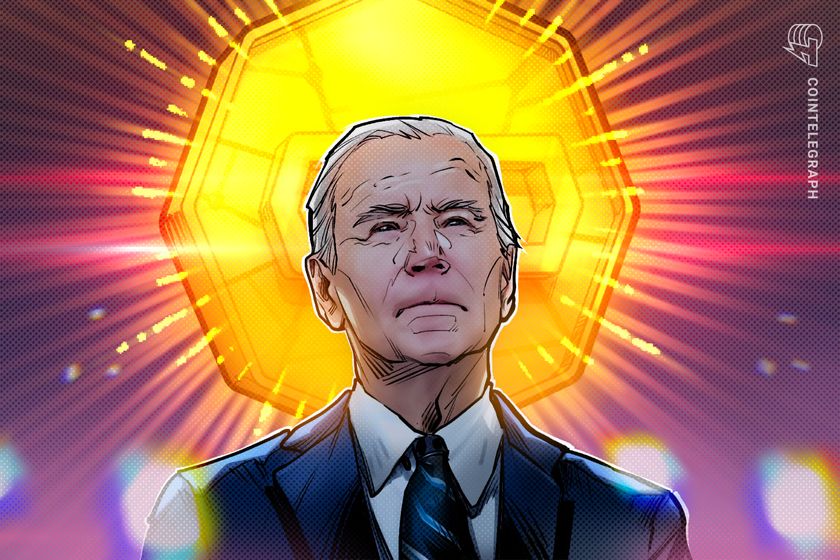
Former United States President Joe Biden leaves behind a complicated cryptocurrency record.






